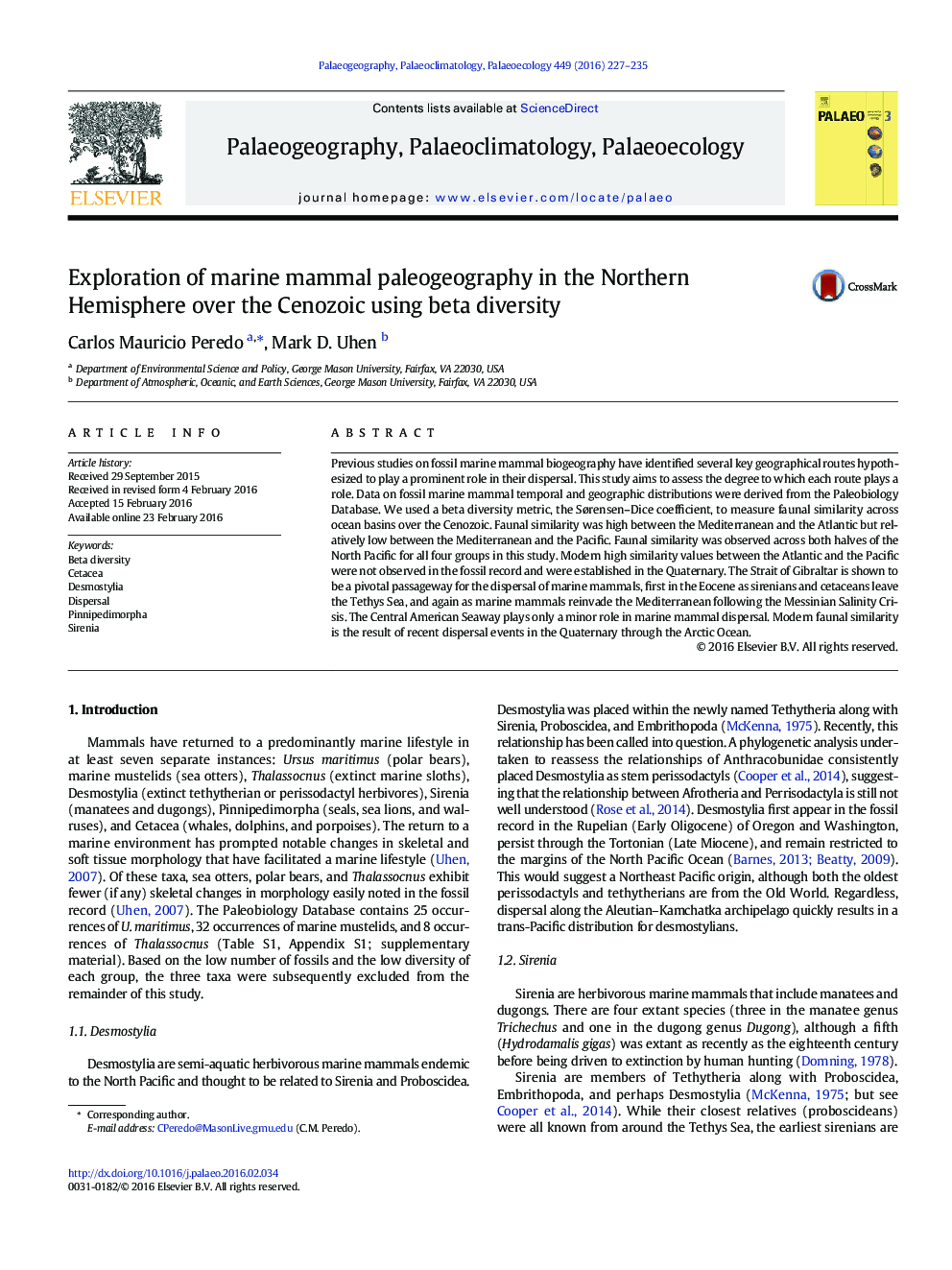| Article ID | Journal | Published Year | Pages | File Type |
|---|---|---|---|---|
| 4465762 | Palaeogeography, Palaeoclimatology, Palaeoecology | 2016 | 9 Pages |
•Beta diversity is used to assess use of distributional passageways by marine mammals.•The Strait of Gibraltar is used by Cetacea and Sirenia to exit the Tethys Sea in the Eocene.•The Strait of Gibraltar is used to reinvade the Mediterranean Sea in the Pliocene.•The Central American Seaway plays only a minor role in marine mammal distribution.•Modern North Atlantic–North Pacific Ocean similarity is established in the Quaternary via the Arctic Ocean.
Previous studies on fossil marine mammal biogeography have identified several key geographical routes hypothesized to play a prominent role in their dispersal. This study aims to assess the degree to which each route plays a role. Data on fossil marine mammal temporal and geographic distributions were derived from the Paleobiology Database. We used a beta diversity metric, the Sørensen–Dice coefficient, to measure faunal similarity across ocean basins over the Cenozoic. Faunal similarity was high between the Mediterranean and the Atlantic but relatively low between the Mediterranean and the Pacific. Faunal similarity was observed across both halves of the North Pacific for all four groups in this study. Modern high similarity values between the Atlantic and the Pacific were not observed in the fossil record and were established in the Quaternary. The Strait of Gibraltar is shown to be a pivotal passageway for the dispersal of marine mammals, first in the Eocene as sirenians and cetaceans leave the Tethys Sea, and again as marine mammals reinvade the Mediterranean following the Messinian Salinity Crisis. The Central American Seaway plays only a minor role in marine mammal dispersal. Modern faunal similarity is the result of recent dispersal events in the Quaternary through the Arctic Ocean.
